The procedure for repairing in the room requires mandatory calculation of the area of \u200b\u200bthe walls, ...
|
|
Low thermal losses, vapor permeability light weight and non -combustibility - these advantages ... |
In the process of erecting any building, first of all, the foundation should be laid. On the basis ... |
The use of mineral wool

Among the large number of thermal insulation materials, mineral wool occupies a special place. Its popularity is explained primarily by low thermal conductivity, environmental safety, resistance in front of the fungus and mold, etc. We will consider further about the features of the use of mineral wool.
Table of contents:
- Mineral wool - components of substances and production
- Mineral wool - characteristics and advantages
- The use of mineral wool as thermal insulation material
- Mineral wool insulation: varieties and description
- Mineral wool insulation technology of the facade
Mineral wool - components of substances and production
The material is based on thin inorganic fiber, it is customary to call mineral wool. To connect the fibers, substances in the form of synthetic glue are used. In relation to the main component of mineral wool, it can be three types:
- synthetic;
- slag;
- basalt.

There are certain world standards, according to which the technological process of the production of stone cotton wool is carried out.
Considering the features and characteristics of this material, it should first of all note low thermal conductivity and resistance before the fire and spread of fire. Due to the frequent weave of the fibers, air pores are formed inside the cotton wool, which provide a low level of thermal conductivity. Due to the low density, there is air that preserves heat inside, inside the cotton wool, without supplying it out. A large number of fibers that are intertwined in a chaotic manner are the basis for the production of stone cotton wool.
At the same time, these fibers have a solid, natural or inorganic texture. The general process of producing stone wool is based on the heating of the starting material to a certain temperature, and the stretching of thin threads from it, a certain mechanical device. The binder helps to combine the smallest fibrous threads and gives them a certain shape.
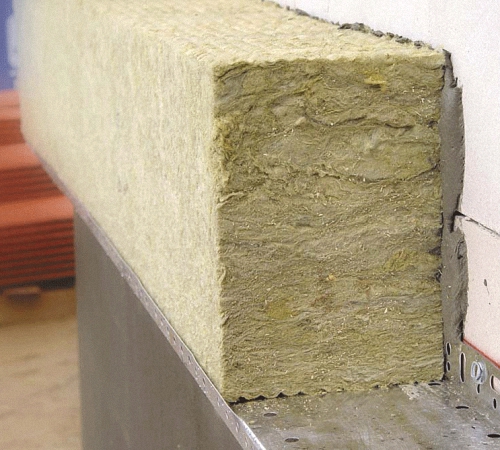
Mineral wool - characteristics and advantages
Mineral wool fibers can be located in a chaotic manner, so its structure is determined by the composition of the starting raw materials. There are several options for mineral wool:
- with a horizontal direction of fibers;
- with a vertical direction of fibers;
- corrugated type;
- spatial type.
The choice of one or another variant of the insulation depends on the sphere and place of its application. Stone wool is resistant to high temperature. This also explains the high level of her fire safety. This material is not prone to the combustion process, does not ignite, tolerates heat well.
Mineral wool is resistant to the aggressive environment and chemical components of different compositions, this property significantly expands the places of its use. The high popularity of mineral wool is explained by its characteristics as high thermal insulation and soundproofing indicators.

The most popular place of use of mineral wool is the insulation of wall partitions, ceilings and various kinds of structural elements. In addition, with the help of mineral wool, stoves, pipelines, surfaces that are exposed to increased temperature conditions are insulated.
Warming with mineral wool is distinguished by such advantages:
- low level of thermal conductivity, which makes it quite popular material in the insulation market;
- Mineral wool is referred to non -combustible materials, and therefore its use reduces the risk of fire in the house;
- strength before compression and mechanical influences provides a long service life of mineral wool and the possibility of its use even for insulation of foundations and places that are subjected to permanent load;
- The strength to the break makes mineral wool an indispensable insulation during the insulation of the facade surfaces;
- a low level of moisture absorption provides the material for a long period of use, since due to the fact that stone wool does not hold, and does not absorb moisture, fungus and mold do not develop on its surface;
- Ensuring high-quality sound insulation is achieved due to the fact that the fibers are intertwined in a chaotic manner, mineral wool is also used in the process of sound insulation of recording studios;
- resistance in front of a high temperature, under the influence of heat and cold, mineral wool does not deform does not lose its characteristics;
- biological resistance and good antiseptic indicators make mineral wool quite popular and popular building material, not only in the insulation industry;
- Environmental safety of the material allows you to use it for insulation of children's rooms, spa and medical institutions;
- The ease of installation is another very significant advantage, mineral wool is produced in different forms, so choosing the necessary from them, it is easily mounted on any surface.
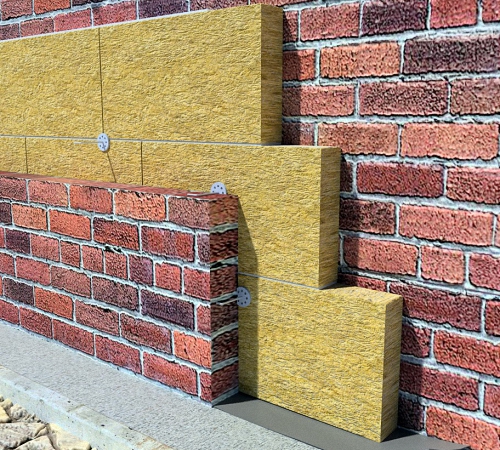
However, it should be taken into account the fact that the use of poor -quality material can lead to harm to human health. According to foreign research, mineral wool may differ in its composition of harmful substances and connecting resins. These substances, standing out into the environment, negatively affect the mucous membranes of a person, such as eyes, skin or respiratory organs.
Therefore, it is not recommended to use mineral wool for insulation of residential premises inside the rooms. The presence of phenol in its composition negatively affects people's health, especially in the absence of a normal air conditioning and ventilation system.
The use of mineral wool as thermal insulation material
Mineral wool is used for insulation of both internal and external sections of the building. The form of its release is different, both rolled and slab. When choosing mineral wool sizes, the following characteristics should be taken into account:
- place of installation of the material;
- climate conditions of the region;
- Additional heat losses.
The industry of its use depends on the density of mineral wool. Material with more stringent characteristics is used for external thermal insulation. With it, it is possible to provide not only insulation, but also protection, facade, roof, basement, from external factors. In horizontal areas, it is possible to use material with a lower density.
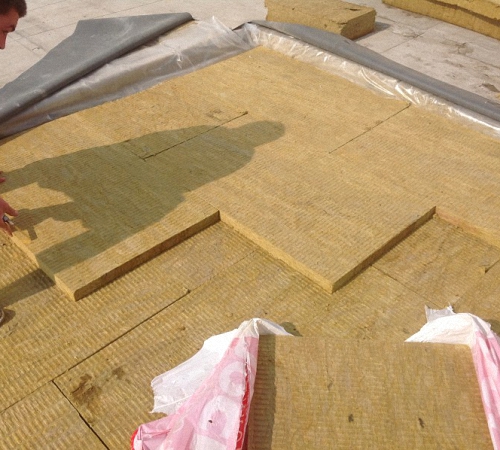
There are two types of thermal insulation:
- industrial;
- Technical.
The first option is used if the temperature of the exposure to the material exceeds 900 degrees of heat.
We offer to familiarize yourself with the sphere of insulation with mineral wool:
- not loaded isolation on any kind of structures and buildings, installed, both in vertical and horizontal and inclined position;
- insulation according to the plastering type;
- thermal insulation for hinged facades of a ventilated type;
- internal insulation of various kinds of fencing structures;
- in the system of sandwich panel structures, panels made of concrete, layered styling;
- thermal insulation of the industrial industry, isolation of water pipelines, chimneys, furnace structures, metallurgy and petrochemistry;
- the lower layer of thermal insulation in flat roofing structures;
- Thermal insulation of wall and ceiling floors in a bath or sauna.
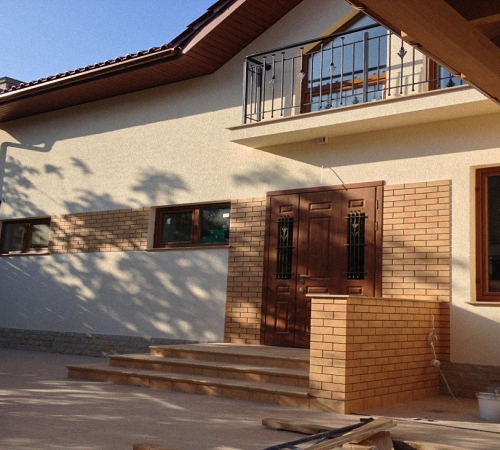
Mineral wool insulation: varieties and description
As mentioned earlier, mineral wool can be of three types:
- glass wool;
- stone insulation;
- slag insulation.
For the production of the first option, substances are used in the form of sand, drill, limestone and soda. All components are placed in a special reservoir, where they are mixed and melting. At the same time, the heating temperature reaches 1410 degrees. This is followed by the process of passing the resulting glass through the surface of the filters and enters the mechanism of inflating it on the smallest fibrous elements, with which the insulation is formed.
This process is carried out when exposed to special adhesive fibers. In order for a certain connection between the fibers to form, the material is processed at a temperature of about 240 degrees. This is followed by the process of cutting and packaging of cotton wool, in relation to its size. In mineral wool, the thickness is also determined by the sphere and place of its use.
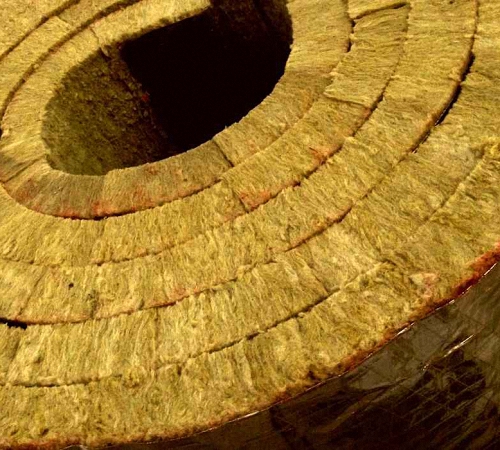
Among the advantages of this material we note:
- excellent thermal conductivity;
- good sound insulation;
- high resistance to chemicals;
- resistance to combustion and wire;
- lack of shrinkage;
- sound absorption;
- High strength characteristics.
Among the shortcomings of this material, we note a high level of fragility of its fibers, the need to work with the material, exclusively in a mask and special clothing, a low level of thermal stability.
Mineral basalt cotton wool - also called stone. For its manufacture, rock stone is used. This raw material melts under a temperature of about 1,500 degrees, turns into fibrous substances and is interconnected by adhesive components.
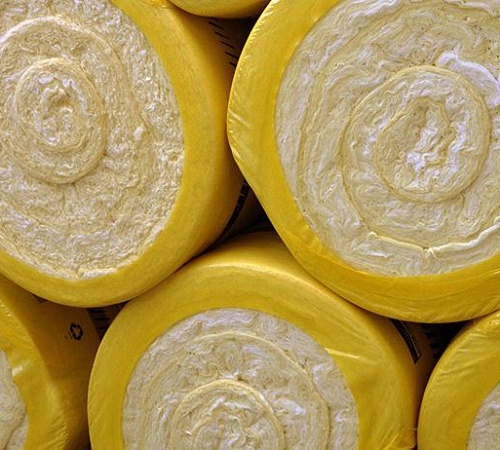
Among the advantages of mineral wool on the basalt -based, we note:
- excellent thermal conductivity of mineral wool;
- good level of sound absorption;
- high level of thermal resistance;
- duration of operation;
- resistance before shrinkage;
- moisture resistance;
- chemical neutrality;
- Easy to work with the material compared to glass wool.
However, in this material there are substances harmful to human health, which, during its heating to a temperature of about 600 degrees, begin to stand out into the environment and adversely affect people's health.
For production, slag use of metallurgical production is used. This material is perhaps the only advantage - low cost. However, there are much more disadvantages. Among them we note:
- low temperature regime of the use of material, which is more than 250 degrees;
- low thermal conductivity;
- The term of use of the material is no more than fifteen years;
- high level of moisture absorption;
- The presence of very fragile and brittle fibers.
If you use slag with metal surfaces, then in contact with water, it begins to oxidize and lead to their corrosion.
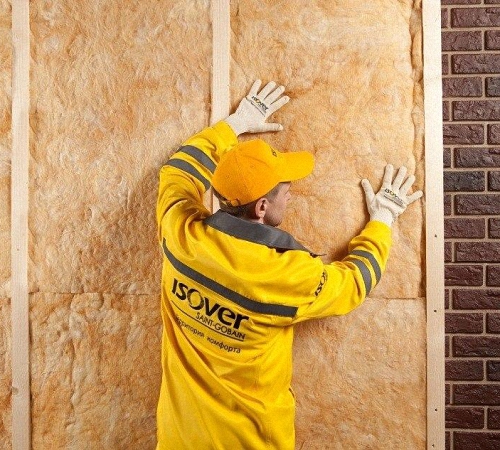
Mineral wool insulation technology of the facade
Before starting work, prepare the surface of the facade for insulation. To do this, all additional and unnecessary elements are removed from it, which will prevent the fixation of mineral wool on its surface. If there are areas on the walls on which plaster or paint is exfoliated, then they need additional repair. Next, the primer of the walls should be performed.
After that, the guide profile is attached to the walls, with it it is possible to support the first row of mineral wool, which is laid on the surface of the wall. To fix the metal profile, dowels are used on the wall. At the same time, without fail, between the profile and the ground, they leave the interval half a meter.
In order to reliably fix the insulation on the facade surface, we recommend using special glue. Thermal insulation with mineral wool involves the use of dry glue, which is diluted with water before starting work. The proportions and ratio of adhesive and water, see the instructions. Make sure that the composition is homogeneous. Glue is applied directly to mineral wool slabs. Then they are tightly pressed against the wall.
Tip: before the glue, the plate should take a certain position. After laying the first row, immediately start the installation of the second.
Keep in mind that the joints between mineral wool slabs should resemble brickwork. After gluing the material, the process of fixing them with fasteners follows. For these purposes, special dowels are used that have the shape of a fungus.
After laying and fixing all the plates, they are reinforced with an adhesive composition and fiberglass. Using a special corner will help reinforce the corner sections of the plates. Next, the process of plastering walls follows.
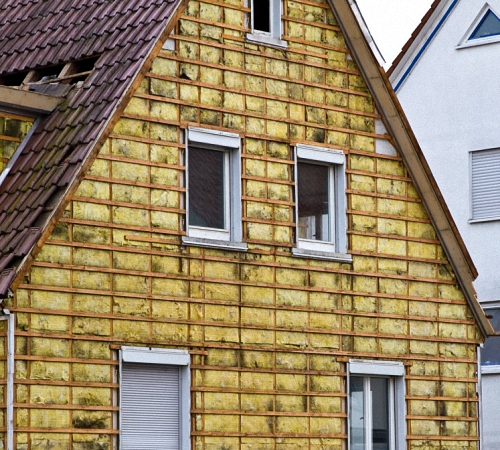
If after insulation of the facade, it will be finished with siding, then before laying the mineral wool, a special film is installed in the form of isospan. It will help to avoid the effects of moisture on the insulation. To fix the plates, only fasteners, but not adhesive will be used. Next, another layer of isospan is followed, and a gap is left between the siding and the insulation.
